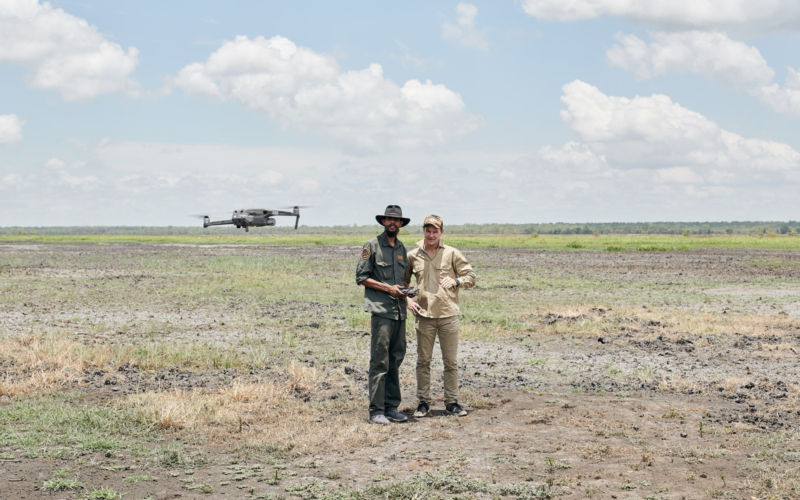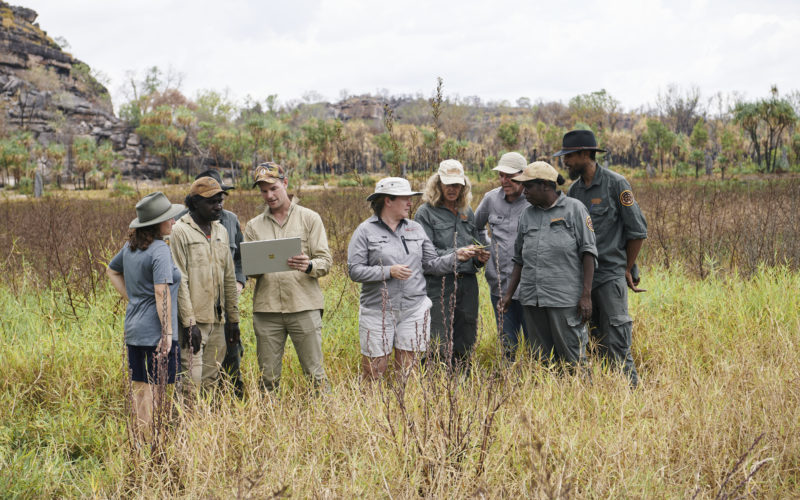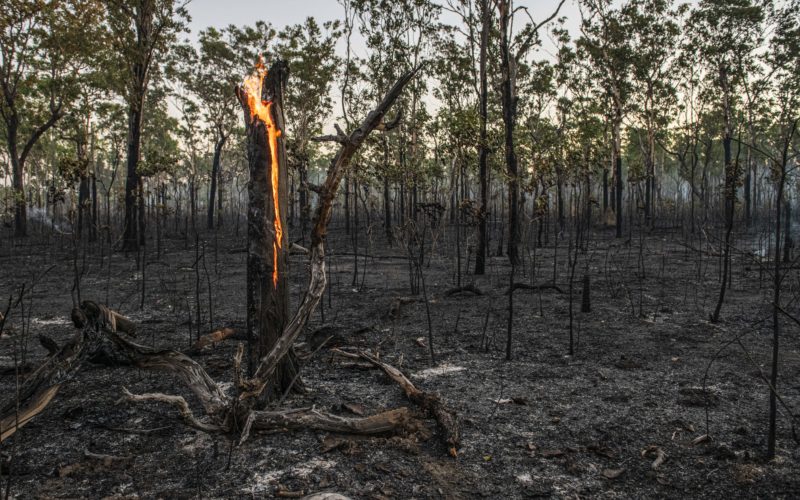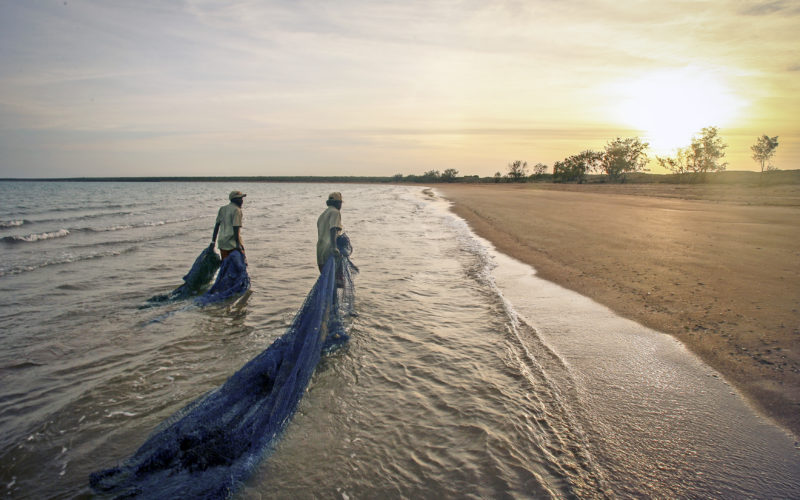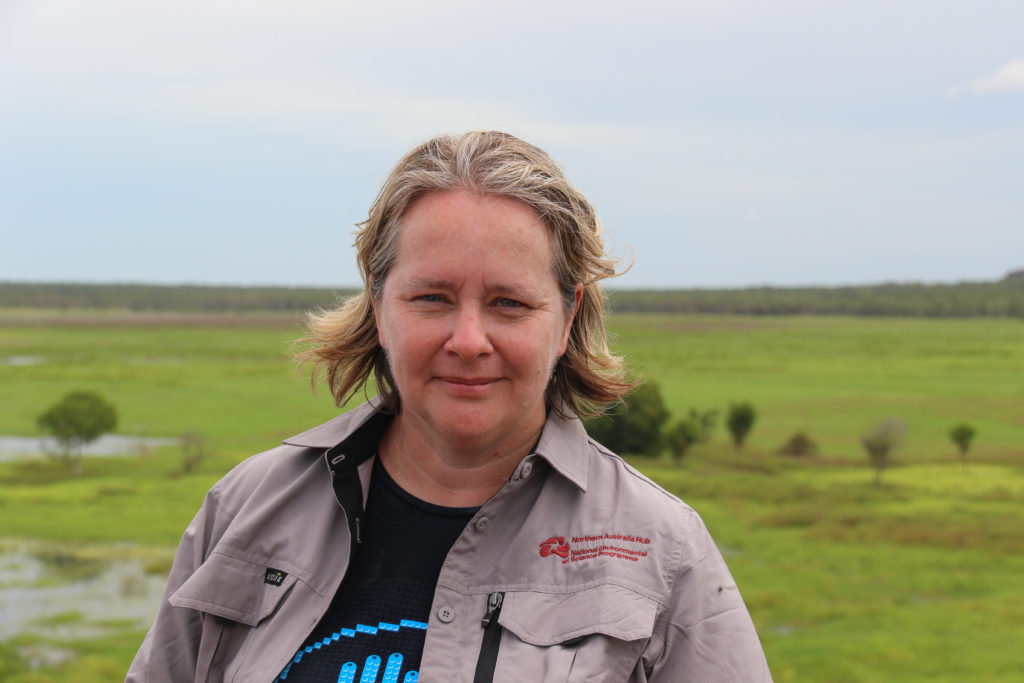
Dr Cathy Robinson
Research group leader and principal research scientist, CSIRO
See Dr Robinson’s full research profile here.
E: catherine.robinson@csiro.au
Research outputs linked to policy change and decision-making
- Australia needs better cross-cultural approaches to monitor and evaluate the health of Country in protected areas. As in other protected areas around Australia, staff and Traditional Owners in Kakadu National Park are committed to working together to protect the health of important values on their country. To care for important areas, cross-cultural monitoring and evaluation frameworks need to be co-designed and trialled with Indigenous partners to develop appropriate measures of success, data sharing processes, and methods for identifying priority management actions. As project leader on the National Environmental Science Program (NESP) Northern Australia Environmental Resources Hub (NAERH) Indigenous natural resource management in Kakadu project, Dr Robinson has worked with the project’s Indigenous Steering Committee, 37 Indigenous co-researchers and the CSIRO-University of Western Australia-Charles Darwin University team to find innovative ways to use Indigenous healthy Country indicators to guide adaptive decision-making in this World Heritage Area. This included brokering a partnership with Microsoft to combine cutting-edge artificial intelligence (AI) technology, the wisdom of Traditional Owners, skills of leading scientists from many different disciplines, and understanding of management challenges from our decision-makers, to create innovative evidence-based solutions using local Indigenous healthy Country indicators. For example, under the direction of Traditional Owners, they generated fast and vast information on where to target the management of para grass weed, which reduces magpie goose habitat – a key healthy Country indicator used by Traditional Owners. With better weed control, the habitat increased, and the count of magpie geese in one wetland jumped from 50 to 1,800 birds in 9 months.
- The Australian National Threatened Species Strategy emphasises the increasing potential for Indigenous people to be formally involved in the management of threatened species. Yet there has been no national understanding of the extent of this current contribution of Indigenous people to conservation efforts on Indigenous-owned or-managed lands. As Project Leader for NESP Threatened Species Hub Indigenous partnerships for threatened species and management project, Dr Robinson has led a multi-disciplinary and cross-cultural team to quantify the nature and extent of the existing involvement of Indigenous people in threatened species management in Australia and across the world. Spatial maps showing the conservation benefits of Indigenous lands and activities have used to inform the case for recognising Indigenous and local knowledge in the Intergovernmental Science-Policy Platform on Biodiversity and Ecosystem Services. This information was used to help non-Indigenous partners understand how Indigenous communities can be empowered to care for Australia’s significant (including cultural) species and their habitats. In her role on the expert advisory group on the International Union for Conservation of Nature (IUCN) Green List, Dr Robinson has translated these findings into the application of this standard to recognise that plant and animal species are ‘special’ to Indigenous people for different reasons, their care is important for a range of values, and these species are part of Country that are nourished by Indigenous knowledge systems, and intrinsically linked to Indigenous rights and identity.
- A key area of Dr Robinson’s research has also focused on practical ways to support Indigenous fire management through a number of mechanisms. This has included her role as project leader for a NESP NAERH project that identified mechanisms by which non-government organisations, governments and corporations can support Indigenous fire management through cross-cultural conservation, carbon offset and fire hazard reduction partnerships. Dr Robinson is currently engaging with Indigenous fire experts across the nation to identify practical measures to support Indigenous fire management in her role on the expert panel charged with providing a report to the Council of Australian Governments on practical resilience measures in relation to bushfires and climate change.
- NESP NAERH projects: Bininj/Mungguy healthy Country indicators for Kakadu National Park, Lessons from Top End Indigenous fire management, Indigenous NRM in Kakadu National Park and Investing in Indigenous cultural and natural resource managers.
Dr Robinson represents a group with expertise in combining innovation and natural resource management.
You can find Dr Robinson’s publications at Google Scholar and Publons.
Current academic employment and positions
Highest qualification
- 2000: PhD in environmental science, Monash University.
Major prizes, medals and honours
- 2019: Science and Technology Australia: Superstar of STEM Award
- 2018: CSIRO Medal: Aboriginal and Torres Strait Islander Engagement Impact Excellence
- 2018: CSIRO Land and Water Science Excellence Award
- 2017: Federal Business, Industry and Innovation Women in STEM and entrepreneurship award
- 2015: Australian Science and Innovation Forum Innovator of Influence Award.
My Projects
 Current project
Current project Completed project
Completed project
NESP RLH, 2021-2027NESP, 2015-2021NERP, 2012-2015TRaCK, 2005-present

